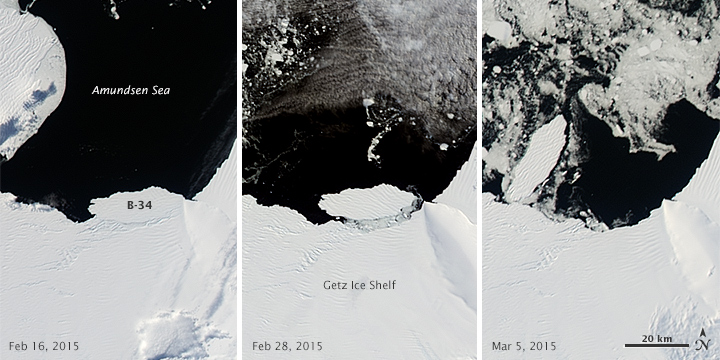


On March 6, 2015, the U.S. National Ice Center (NIC) discovered a new iceberg adrift off the coast of Antarctica. Measuring 27 kilometers (17 miles) long, iceberg B-34 meets the 19-kilometer minimum required for tracking by the NIC.
The berg appears to have fractured from West Antarctica’s Getz Ice Shelf and moved out into in the Amundsen Sea sometime in mid- to late-February 2015. The Moderate Resolution Imaging Spectroradiometer (MODIS) on NASA’s Terra and Aqua satellites acquired these images spanning the calving event. The first image (left) shows the iceberg on February 16, when it was still attached to the ice shelf. By February 28 (middle), it appears to have separated somewhat. By March 5 (right), it is floating freely.
B-34 is the 34th iceberg from the “B” quadrant of Antarctica (located between 90 degrees East and 180 degrees) to be tracked by the NIC. The new berg is still smaller, however, than the much older B-15T—a fragment of B-15 that initially broke off from the Ross Ice Shelf in March 2000.
Large icebergs can have large-scale impacts on the Southern Ocean. For example, as the bergs melt, the addition of cold, fresh water to the saltwater ocean can affect ocean currents and circulation. Researchers have shown, however, that even more fresh water comes from the melting of smaller and much more numerous bergs.
NASA images by Jeff Schmaltz, LANCE/EOSDIS Rapid Response. Caption by Kathryn Hansen.